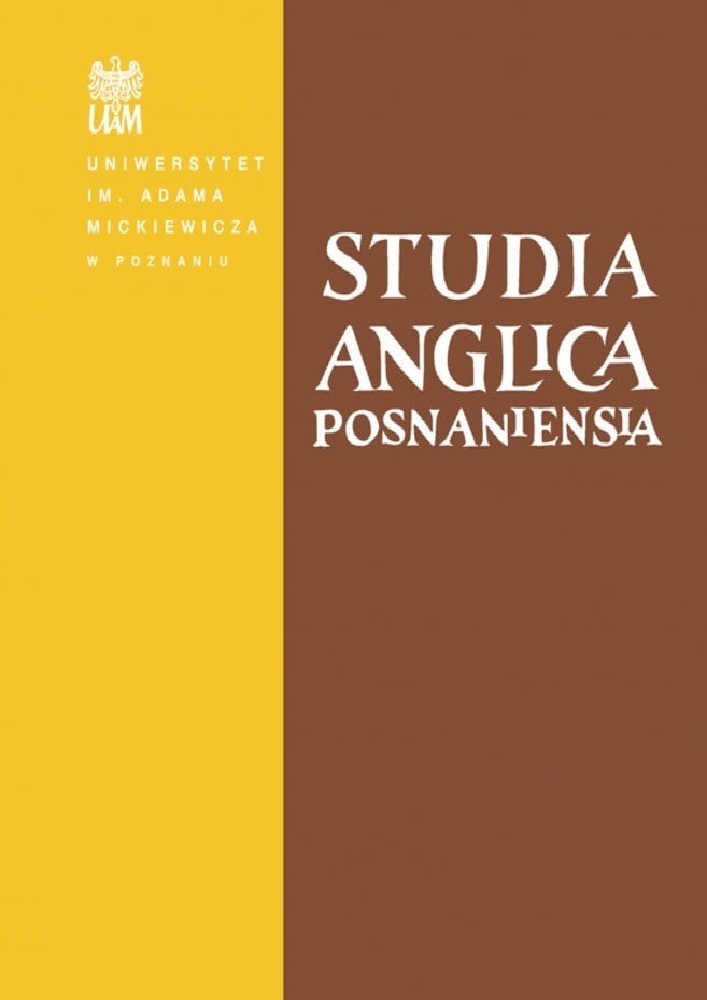Abstract
This paper seeks to present the main meanings and the use of the modal verb can in the plays of two Early Modern English playwrights, William Shakespeare and Christopher Marlowe. In particular, the study aims at presenting a comparative analysis and provides descriptive as well as quantitative data. The research is based on the analysis of the corpus consisting of the plays written by Shakespeare and Marlowe between 1593-1599. The choice of the works is not random but includes the plays which bear the strongest resemblance in terms of theme, structure, and most importantly, the language of both authors.
References
Newdigate, Bernard H. & Bette Davis (eds.). 1947. The works of William Shakespeare gathered into one volume. London: The Shakespeare Head Press Odhams Press Ltd. and Basil Blackwell.
Crane, Gregory R. (ed.). The works of Christopher Marlowe. Perseus Collection. Perseus Digital Library Project. Tufts University. 31.07.2011 <http://www.perseus.tufts.edu>
Abbott, Edwin A. 1966. Shakespearian grammar. An attempt to illustrate some of the differences between Elizabethan and modern English. New York: Dover Publications, Inc.
Blake, Norman Francis. 2002. A grammar of Shakespeare’s language. Basingstoke & New York: Palgrave Macmillan.
Bybee, Joan. 1988. Semantic substance vs. contrast in the development of grammatical meaning. Berkeley Linguistic Society 14. 247-264.
Bybee, Joan, Revere Perkins & William Pagliuca. 1994. The evolution of grammar. Tense, aspect, and modality in the languages of the world. Chicago & London: The University of Chicago Press.
Bybee, Joan & Suzanne Fleischman (eds.). 1995. Modality in grammar and discourse. Amsterdam: Benjamins.
Coates, Jennifer. 1983. The semantics of the modal auxiliaries. London: Croom Helm.
Denison, David. 1993. English historical syntax: Verbal constructions. New York: Longman.
Ehrman, Madeline. 1966. The meanings of the modals in Present-Day American English (Janua Linguarum). The Hague: Mouton.
Facchinetti, Roberta. 1993. Can vs. may in Early Modern English. In: Maurizio Gotti (ed.), 1993. English diachronic syntax, 209-221. Milan: Guerini Studio.
Gotti, Maurizio, Marina Dossena, Richard Dury, Roberta Facchinetti & Maria Lima. 2002. Variation in central modals: A repertoire of forms and types of usage in Middle English and Early Modern English. Bern: Peter Lang.
Hogg, Richard. 2002. An introduction to Old English. Edinburgh: Edinburgh University Press.
Kakietek, Piotr. 1972. Modal verbs in Shakespeare’s English. Poznań: Wydawnictwo Naukowe Uniwersytetu im. Adama Mickiewicza w Poznaniu.
Kytö, Merja. 1987. On the use of the modal auxiliaries indicating ‘possibility’ in Early American English. In: Martin Harris & Paolo Ramat (eds.), 1987. Historical development of auxiliaries, 145-170. Berlin: Mouton de Gruyter.
Kytö, Merja. 1991. Variation and diachrony, with Early American English in focus: Studies on ‘can/may’ and ‘shall/will’. Frankfurt am Main: Peter Lang.
Leech, Geoffrey & Jennifer Coates. 1980. Semantic indeterminacy and the modals. In: Sidney Greenbaum, Geoffrey Leech & Jan Svartvik (eds.). 1980. Studies in English linguistics for Randolph Quirk, 79-90. London: Longman.
Lightfoot, David W. 1979. Principles of diachronic syntax. Cambridge: Cambridge University Press. Palmer, Frank R. 1965. A linguistic study of the English verb. 1st edn. London: Longman.
Palmer, Frank R. 1974. A linguistic study of the English verb. 2nd edn. London: Longman.
Palmer, Frank R. 1990. Modality and the English modals. 2nd edn. New York: Longman.
Palmer, Frank R. 2001. Mood and modality. 2nd edn. Cambridge: Cambridge University Press.
Papafragou, Anna. 2000. Modality: Issues in the semantics-pragmatics interface. Oxford: Elsevier.
Portner, Paul. 2009. Modality. Oxford: Oxford University Press.
Traugott, Elizabeth Closs. 1972. A history of English syntax. A transformational approach to the history of English sentence structure. New York: Holt, Rinehart and Winston, Inc.
Twaddell, W. F. 1963. The English verb auxiliaries. Providence, Rhode Island: Brown University Press.
Verstraete, Jean-Christophe. 2001. Subjective and objective modality: Interpersonal and ideational functions in the English modal auxiliary system. Journal of Pragmatics 33. 1505-1528.
Visser, Fredericus Th. 1978. An historical syntax of the English language. Part three. First half. Syntactical units with two verbs. Leiden: E. J. Brill.
Warner, Anthony R. 1990. Reworking the history of English auxiliaries. In: Sylvia Adamson, Vivien Law, Nigel Vincent & Susan Wright (eds.). 1990. Papers from the 5th International Conference on English Historical Linguistics, Cambridge, 6-9 April, 1987, 537-558. Amsterdam: John Benjamins.
Warner, Anthony R. 2003. English auxiliaries. Structure and history. Cambridge: Cambridge University Press.
